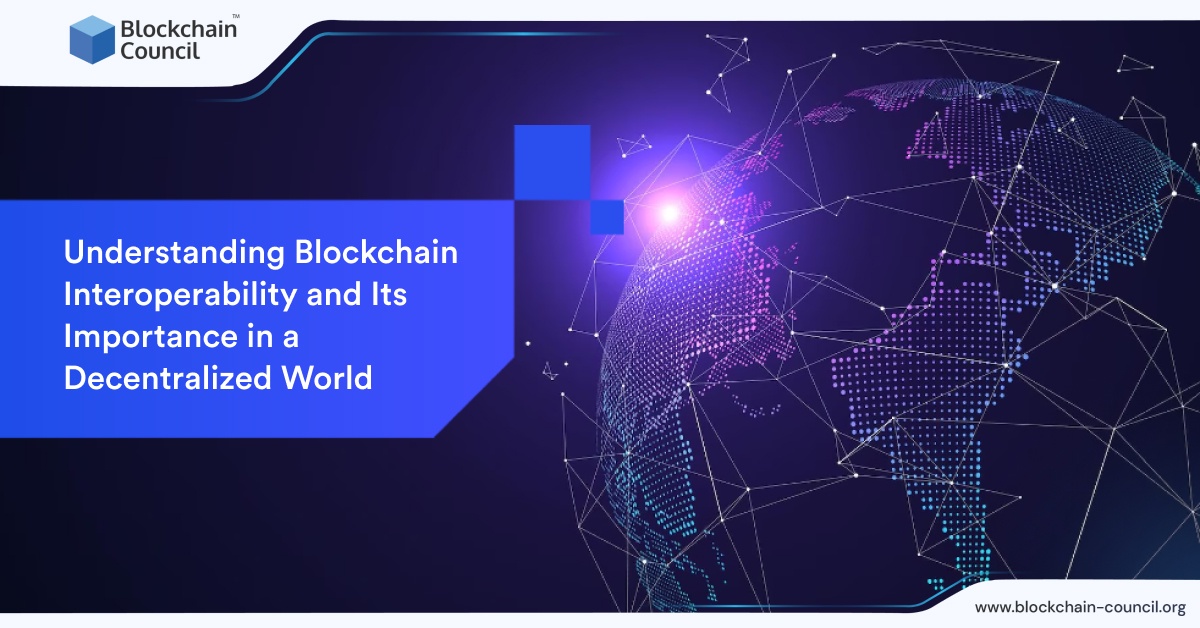You may have heard much about blockchain technology, a decentralized platform where you can keep information and data in digital ledgers. Because it uses the decentralized platform, it is very safe and secure. With this, many companies have started to understand the importance of blockchain in their business, and hence, many blockchains have been created.
With an increase in the different types of blockchains, there arose a need for interoperability between them. Since every blockchain has unique features, interoperability would ensure leveraging them all. Simply put, blockchain interoperability is the medium through which different blockchains across the world can communicate with each other. With many industries adopting it now, it is essential to complete blockchain courses to understand its various functions that can help you land a great career.
What is blockchain interoperability?
As mentioned above, blockchain interoperability means the way different blockchains communicate with each other. Through a cross-chain messaging system, the different blockchains can read or write data to each other. The primary purpose of blockchain interoperability is to share digital assets and data and ensure that transactions are run effectively.
Interoperability is one of the essential components of decentralization as it helps in a secure information-sharing platform between two blockchains. And hence, different blockchains can share their activities through a set of predefined rules and regulations.
Hence it is needed for complete blockchain development. And for this reason, you must complete your blockchain certification to be a master in this field to understand every component.
How is blockchain interoperability important to the decentralized world?
Blockchain interoperability's primary importance is ensuring seamless communication and data transfer between the various blockchains in the blockchain technology environment. Simply put, when different blockchains in the same world, like Bitcoin, want to communicate, it is a very simple process. But it is a very challenging task when two blockchains from two different worlds want to share and transfer data, such as Bitcoin and Ethereum.
In such a situation, blockchain interoperability comes into the picture and helps to solve the problem. With the help of blockchain interoperability, there will be no difficulty between the different blockchains, and users will be able to take benefit from the various features of each world.
After completing the various blockchain courses, a user will be able to understand how interoperability works, and it will be able to support and enhance productivity.
Blockchain interoperability is of utmost importance in blockchain development. Since a lot of people will want to create cross-channel communication to maintain a single level of transparency amongst all worlds. Moreover, it is also essential for blockchain developers who want to learn and explore the different features of each blockchain world.
Different kinds of blockchain interoperability
Blockchain interoperability has various kinds of cross-chain solutions to offer; below are a few for your reference:
Token Swaps
Tokens are standard in blockchain; with these token swaps, people can trade their tokens from the source end and receive another at the destination end.
Token Bridges
In the case of token bridges, users will be able to burn or lock their tokens through a smart contract at the source end and mint or unlock their tokens at the destination end.
Native Payments
In native payments, there is an application on the source end that triggers or informs of the payment on the destination end in its native asset.
Contract Calls
Contract calls are needed for token swaps or token bridges. It is basically when a smart contract on the source ends, making a contract call to another smart contract on the destination end for doing token swaps or bridges.
Programmable Token Bridges
After the tokens are delivered from the source to the destination, a contract call is executed using the programmable token bridges. It is generally a single transaction doing swapping, mining, staking, or depositing the tokens to complete the bridge.
To sum it up
Blockchain is still a developing world, and every time and now something new is developed. People are still trying to discover the unique features of blockchain, and interoperability is one of them. It is a crucial function enabling a comfortable communication path between blockchains. Check out Blockchain Council for helpful articles and blogs to help you along your blockchain journey, and consider taking a cryptocurrency trading course to expand your knowledge in this area.


No comments yet